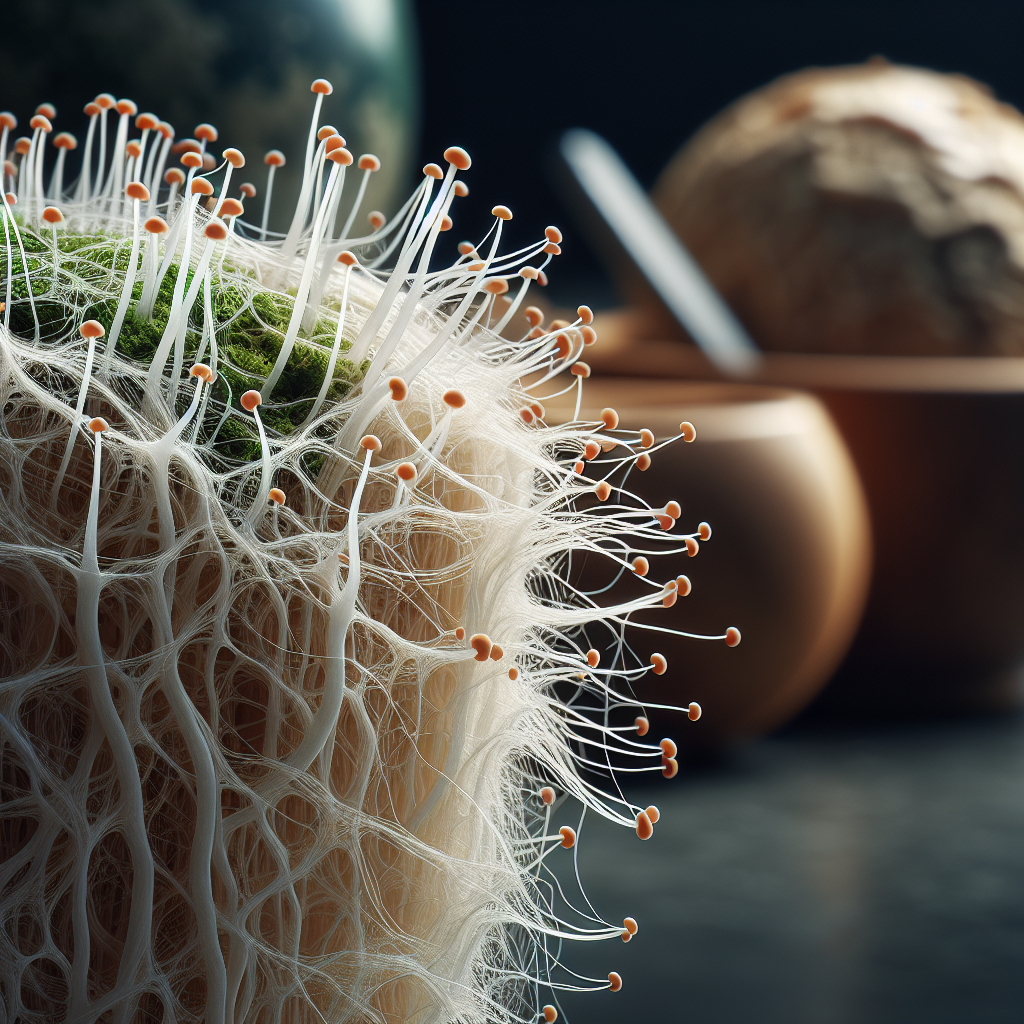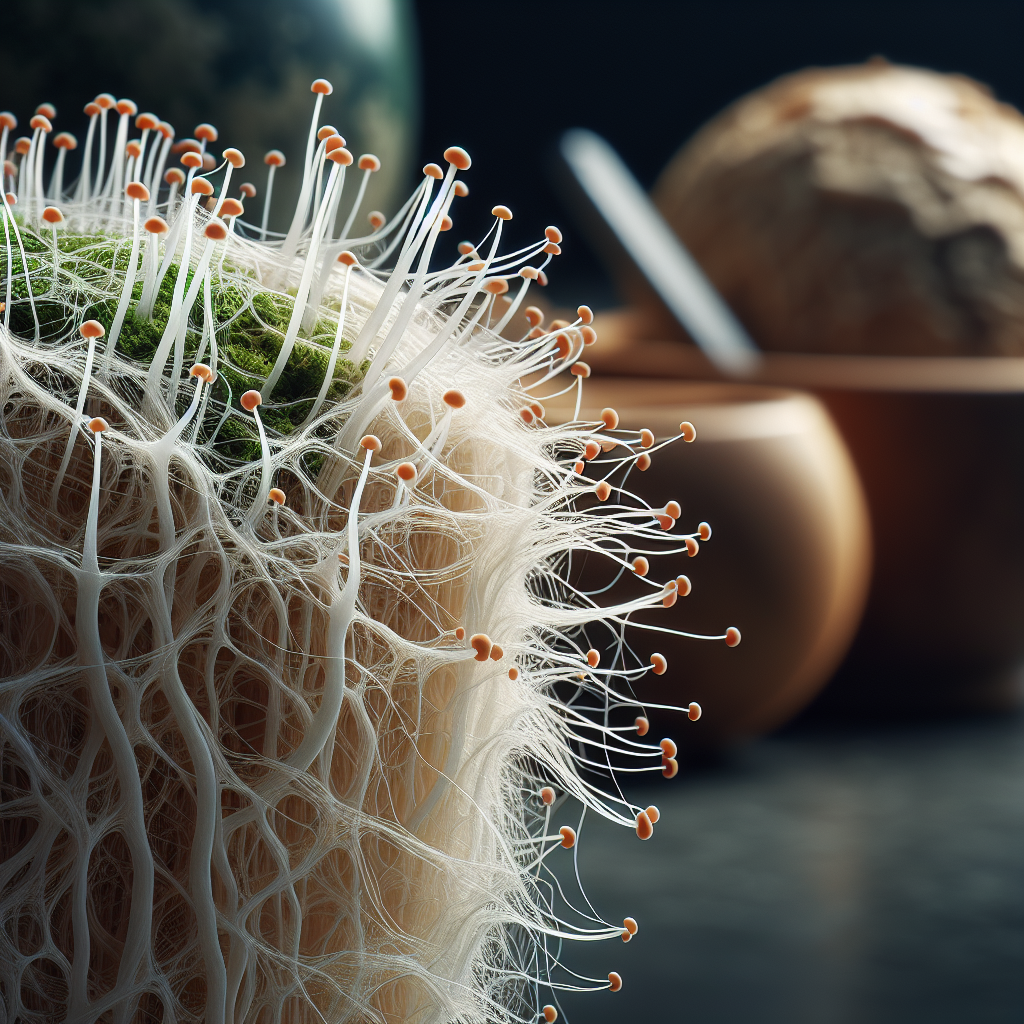In “Understanding Mycelium: Can You Really Eat It?”, your curiosity about this natural phenomenon and its consumption potential will be both piqued and satisfied. This intricate network of fungi threads beneath the earth is not just a scientific marvel, but may also prove to be a vital, nutritional food source. Throughout the article, you will be given a comprehensive overview of mycelium its biological functionality, ecological balance and most importantly, its culinary relevance. Prepare yourself to uncover the truth behind whether or not it is suitable for human consumption.
Understanding Mycelium
Mycelium represents an integral part of the fungi kingdom, forming the vegetative part of the organism and contributing to its growth and reproduction. It is essentially the fungal analog of plant roots and consists of a network of fungal cells called hyphae. Mycelium is usually found underground, permeating through various substrates including soil, compost, or in association with plant roots. It allows the fungi to absorb nutrients and water, while also participating in decomposition and organic matter recycling.
Definition and nature of mycelium
Mycelium refers to a network of fine, branching filaments called hyphae that collectively form the vegetative part of a fungus. Each hypha is a tiny tubular cell that grows and extends, connecting with other hyphae to create a complex, web-like structure, that of mycelium. The nature of mycelium is multifaceted; it’s highly resilient, adaptable to different environments, and plays a crucial role in nature’s recycling system.
Role of mycelium in the ecosystem
Mycelium contributes greatly to our ecosystem in ways that can’t be overstated. As a primary decomposer, it plays a significant role in breaking down organic material, thus aiding in the natural recycling process. By doing so, it releases essential nutrients back into the soil, boosting its fertility and promoting the growth of other plants. Additionally, through a symbiotic relationship with plant roots, mycelium helps plants absorb essential nutrients and water, while the plants supply organic materials for the fungi to process.
Composition of Mycelium
Type of organism mycelium is
Mycelium is a part of the organisms that fall under the fungi kingdom. Similar to the root system of a plant, mycelium acts as a conduit for a fungus to absorb water and nutrients, enabling its growth and reproduction. They can exist as single species or in complex ecological interactions with other organisms, thereby contributing to a healthy and robust ecosystem.
Physical characteristics
Mycelium’s physical structure is often likened to an intricate, web-like network. This structure comprises a mass of interconnected hyphae – tubular cells that are capable of expanding and branching off to colonise new areas. This web-like structure, while often microscopic, can grow to be incredibly large in conducive environments.

Nutritional Content of Mycelium
Vitamins and minerals present in mycelium
Mycelium is rich in various vital vitamins and minerals. It contains a spectrum of B vitamins, including Thiamine (B1), Riboflavin (B2), Niacin (B3), Pantothenic acid (B5), Pyridoxine (B6), and Biotin (B7). Additionally, this complex network of hyphae is packed with essential minerals such as Zinc, Magnesium, Potassium, and Selenium.
Protein content and quality
Apart from the high vitamin and mineral content, mycelium also boasts a reasonable protein content, arguably higher than that of many plant-based foods. This protein is of high quality, featuring a comprehensive profile of all the essential amino acids our body needs for maintenance and repair. Such a wealth of nutrients makes mycelium a highly nutritious food source.
Safety of Consuming Mycelium
Potential toxicity
While mycelium derived from edible fungi is generally safe for consumption, some species can contain harmful toxins. It’s crucial, therefore, to source mycelium from trusted suppliers who cultivate it from safe, edible fungi. Beware of potential contamination risks, as mycelium grown in unhygienic conditions may harbour harmful bacteria or other pathogens.
Harmful effects of overconsumption
While there are several benefits to consuming mycelium, as with any food, moderation is key. Excessive consumption can lead to digestive discomfort, such as bloating or diarrhoea, due to its high fibre content. Allergic reactions may also occur in some individuals.

Benefits of Eating Mycelium
Immune system support
Mycelium exhibits strong immune-enhancing properties. It is rich in beta-glucans, bioactive compounds known for stimulating the immune system, enhancing its capacity to fight off pathogens.
Potential for aiding digestion
The high fibre content in mycelium contributes to healthy digestion by promoting regular bowel movements and feeding the beneficial bacteria in your gut. This is particularly valuable as a healthy gut microbiome plays a crucial role in overall health.
Contribution to a balanced diet
Mycelium’s impressive nutritional composition – boasting proteins, vitamins, minerals, and dietary fibre – contributes to a balanced diet, providing essential nutrients necessary for maintaining health and wellbeing.
Ways to Incorporate Mycelium into Your Diet
Incorporating mycelium into meals
Mycelium’s mild, earthy flavour can be a versatile addition to various meals. You can add it to soups, stews, and risotto, or use it as a topping on pizzas and salads. It can also be ground into a powder and added to smoothies or other beverages.
Popular recipes involving mycelium
Many popular dishes are made more nutritious with mycelium. A mushroom stew with mycelium, for example, can be a healthy and hearty meal. A mycelium and vegetable stir-fry is another delicious way you can incorporate this nutritious ingredient into your daily meals.
Mycelium in Culinary Usage
Mycelium as a meat substitute
Mycelium has garnered attention as a potential meat substitute due to its ability to mimic the texture of meat when cooked. This makes it particularly appealing to vegetarians, vegans, or anyone looking to reduce their meat consumption.
Comparisons with similar food products
The nutritional profile and meat-like texture of mycelium are its distinguishing factors among food products. However, it could be compared to other superfoods, like spirulina or chlorella, for its versatile usage and nutrient density.
Popular Mycelium-Based Products
Commercially available mycelium products
There are many commercially available mycelium products that include dietary supplements, teas, powders, and even coffee blends. These products are often marketed towards health-conscious consumers looking for nutrient-dense, plant-based alternatives or immune-boosting supplements.
Reviews and feedback
Generally, reviews and feedback from consumers for mycelium-based products are overwhelmingly positive. Many customers appreciate the nutrient density of these products, while others praise them for their potential health benefits, particularly in terms of immune support.
Potential Risks or Side Effects
Possible allergic reactions
As with any food, mycelium may cause allergic reactions in some individuals. Common symptoms may include skin rashes, shortness of breath, or gastrointestinal distress. Therefore, if you are trying mycelium or mycelium-based products for the first time, start with a small quantity to assess your body’s response.
Negative interactions with medications
Mycelium might interact with certain medications, especially those involving the immune system. As such, if you’re taking prescription medication or have an underlying health condition, it’s advisable to consult your doctor before incorporating mycelium into your diet.
Scientific Research on Mycelium Consumption
Latest studies on nutritional benefits and safety
Current research supports the nutritional benefits of mycelium, especially regarding its immune-supportive properties. Ongoing studies are also exploring its potential role in managing various health conditions, including diabetes and cancer. Safety-wise, research stresses the importance of proper cultivation practices in ensuring the safety and efficacy of mycelium products.
Areas that require further research
While preliminary research on mycelium is promising, more comprehensive studies are needed, particularly in establishing a clear understanding of its potential therapeutic benefits and identifying potential risks and side-effects. With more extensive research, we can better understand the full extent of mycelium’s nutritional and health potential, paving the way for a new, nutrient-rich food source.
